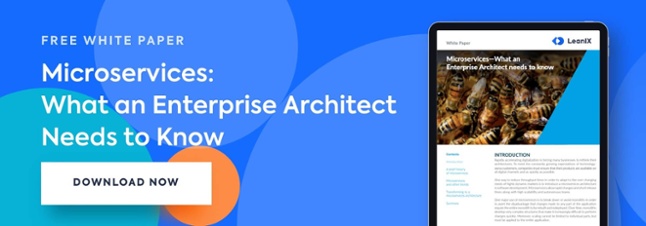
Despite the hype, microservices architecture is still very relevant and beneficial to an enterprise. It’s not just an empty buzzword or an overused term - microservices allow for an agile approach to software development, allowing for small, individual independent applications to communicate with each other using APIs. This, in turn, allows for increased speed to deployment, scalability of applications and rapid testing.
How can EAs find a common ground between with microservices?
EAs Must Place an Emphasis on Becoming Tech-Savvy.
Microservice projects must be integrated with the business plans and IT landscape - which can prove to be a trying task. Microservice projects are ran by solution-oriented developers, while traditional EAs focused on modeling far flung solutions. This difference of view can cause for a breakdown in procedure between EAs and DevOps teams. EAs of Tomorrow are tech-savvy, and are committed to learning the approaches and methodologies of microservice focused development teams.
EAs Must Have an Agile Mindset.
Microservice projects are often agile and offer quick results with rapid iteration. When combining a Microservice architecture with DevOps, companies have the potential to deploy new services at a faster rate, which provides solutions to their end users. As the software release cycle speeds up, successful EAs must adapt to the rapid tempo and keep in pace.
Developers and EAs Should Find a Common Lexicon
The language of microservices often clashes with the language of EA. Simple terms such as “component, process, and service,” could mean different things to the development team. Organizations looking to connect Microservices with EA should establish a clear, concise, term glossary to reference while describing processes.
Establish Open Communication.
Take Away Thoughts:
Progressive architectural thinking is required to map out how your enterprise and can utilize the microservice framework to achieve continuous deployment, and speed up times to market. EAs adapting to this framework will strengthen and enhance the integration between business goals and microservices-led projects that affect the IT landscape. Establishing a common language, learning the approaches and methodologies of the delivery-driven development teams, and adapting an agile mindset will help find a common ground between microservices and EA.
Pioneering companies are fast embracing the agile microservice framework. Are you equipped to integrate EA with microservices?

/EN/Reports/EN-LX-DevOp-Exp-Survey-Resource-Page-Thumbnail.png?width=140&height=99&name=EN-LX-DevOp-Exp-Survey-Resource-Page-Thumbnail.png)